If there’s any musical so deeply ingrained in the Filipino arts lover’s consciousness, it must be “Miss Saigon.” Aside from being one of the longest-running shows on Broadway, it has also helped put many Filipino theater artists on the international stage and put the Philippines on the map as the homeland of many talented singers.
Set in the 1970s during the Vietnam War, “Miss Saigon” is an adaptation of the Puccini opera “Madama Butterfly,” by Claude-Michel Schönberg and Alain Boublil (who both also created “Les Miserables”). It first premiered at the West End in London in 1989, and then on Broadway in 1991, during which Lea Salonga played the lead role of Kim. She also reprised the role when “Miss Saigon” was first staged in Manila in 1999.
Now, 25 years later, “Miss Saigon” finds itself back in Manila, a city instrumental to the musical’s production. (Schönberg, during a recent press event, said there would have been no “Miss Saigon” without Manila.) Like its debut, we also see a young artist of Filipino heritage in the lead—but this time, alongside other Filipinos, too.
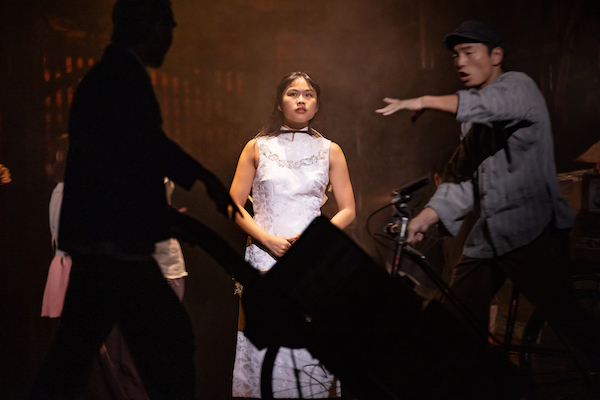
Talking about “Miss Saigon” also can’t go without the controversies it has faced over the decades. It has faced much scrutiny with issues of Asian representation in casting, as well as seen themes of orientalism and racism, especially with regard to how Asians and women were portrayed negatively in the story.
Tweaks have been made in the production since. For example, what was originally gibberish lyrics in the wedding scene in the original production, has been changed to actual Vietnamese lyrics after the show’s revival. But this all also begs the question: If we are watching a “Miss Saigon” staged for an Asian audience, does that make it less racist?
Despite these questions, we cannot deny that “Miss Saigon” is a mammoth in the roster of internationally acclaimed musicals. It is a spectacle of a show, and that’s exactly what we witnessed on its gala night in Manila last March.
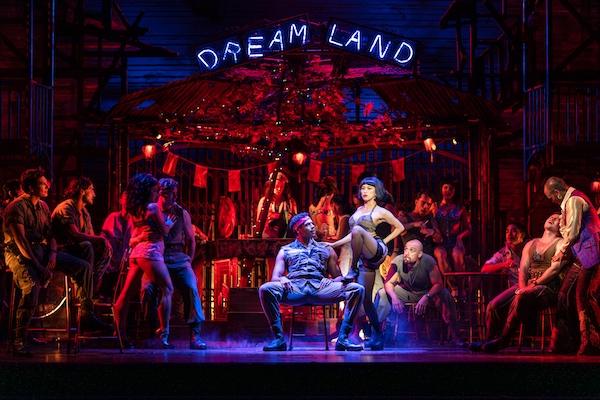
The iconic sets—from the neon-lit Dreamland, the Americans’ helicopter at the embassy, to the glimmering car of the Engineer’s American Dream—all were brought to life in great detail in this production.
Some of the most breathtaking moments include the very second show starts. From all sides, the audience is surrounded by the deafening whir of helicopters overhead, fully immersing us into the scene.
This happens again when we are taken back to the Americans’ retreat from Saigon: The helicopter whirs, headlights flash open, and we see the nearly true-to-life sized helicopter hover over the stage—it’s a heart-stopping moment that makes you flinch by reflex because it almost feels like you’re one of the Vietnamese at the embassy, seeing the aircraft about to loom overhead.

Of course, the Engineer’s sparkling fantasy “The American Dream” is also one of the most anticipated numbers, not only for the impressive set and ensemble that goes into the song but for the man himself. Seann Miley Moore’s Engineer (or as they more accurately say, “Engin-queer”), is the highlight of this entire number, and to put it succinctly, he absolutely slayed the role.
Moore is electric as the Engineer, thanks to the authenticity and energy he brings to the role. His portrayal of the cunning Engineer feels fresh because of how he’s chosen to bring out the character’s qualities. While much of his Engineer is how it has already been written, Moore was able to unearth facets of the character’s personality that makes so much sense infused with queerness.
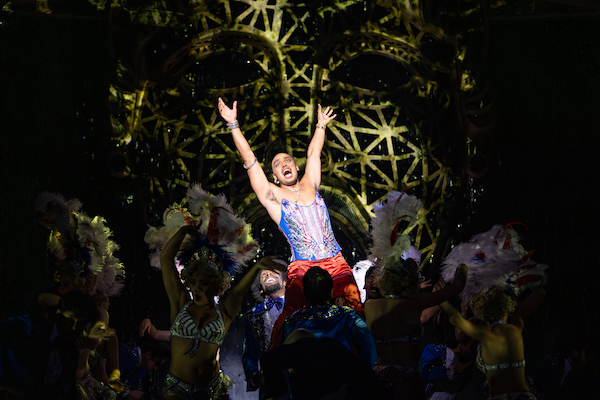
But besides the spectacle, the heart of “Miss Saigon” is also what makes it such a beloved piece of theater. It’s a tragic story of love found in the midst of war, circumstances testing destiny, loss, and even the proof of a mother’s even stronger love, accompanied by heart-wrenching music.
Here, Filipino-Australian Abigail Adriano shines as Kim. She deftly shows the breadth of Kim’s life—from an innocent village girl to a young woman madly in love, to a mother ferociously holding on to life, love, and hope to keep her son alive.
Another tweak with this run of “Miss Saigon” is how Kim shows more agency throughout the story. She is not a girl merely swept up by circumstances or taken along by other people in their own schemes. While, of course, she is still a victim of certain situations—the effects of war on her hometown and her family, for example, which led her to Dreamland to survive—she shows here that she stands by the choices she’s made.
When she chooses to stay with Chris, the way she acts around him isn’t even merely as a “hired” girl—we get to see that she’s not just doing it for the money or the circumstances. We get a sense that she wants it just as much, that perhaps the encounter with Chris has sparked within her the realization of how much she may also have been in want of intimacy, of human touch, and of companionship.

While we can argue on the real depth of their connection (I personally think it’s honeymoon phase at best, and not as true and deep of a love as Kim has believed—but maybe this is me from the lens of a jaded woman), we must also agree that Adriano’s Kim does feel more empowered in her own ways.
It is Adriano’s scenes as Kim with her little son Tam that move me the most. There is excellent command of emotion, while still clearly being able to project and perform what may be the most gut-wrenching songs of the musical.
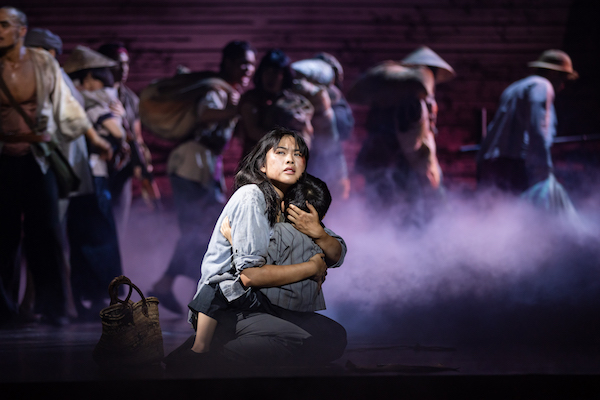
Context
Some of the contention against “Miss Saigon” is that it appears as a story about an Asian country and people but for a white audience. As an Asian looking at it from the point of view that it was intended for Western viewers, it does seem racist to a point, with tragic points in the region’s history seemingly trivialized or left without much context.
There was more focus on prostitution during the time, and there seems to be an emphasis on how many characters wanted to leave Vietnam for America. But it is not elaborated why this is the case. Unless we do our own research, we won’t know through simply watching the show how much the war has ruined Vietnam, why they want to leave, or why they had to resort to such means to survive.

But with this being a production now in Asia, with Asian and Filipino audiences, does that give it a bit more leeway? Personally, despite the tweaks, it still does have the undertone of white people being seen as saviors.
It’s a beautiful, tragic story. It is spectacularly presented. But to get a true grasp of “Saigon” in that era, you’ll have to do your own reading.
While I like that the portrayal of Kim seems to have more agency, it may also help more for viewers to appreciate the entire story if we knew even just a bit of the details. If we could have gotten more context on how “trapped” the people of Saigon were at that point in the story, dealing with three forces ravaging their city—Americans (foreigners!) who said they would help but with their own issues on leadership, also dealt damage, plus the corrupt government of South Vietnam, and the communist forces from North Vietnam closing in on them.
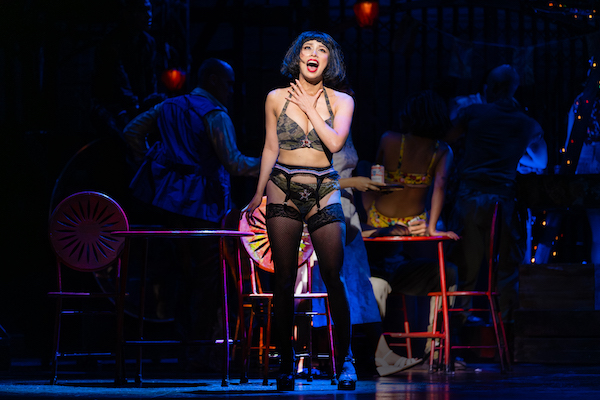
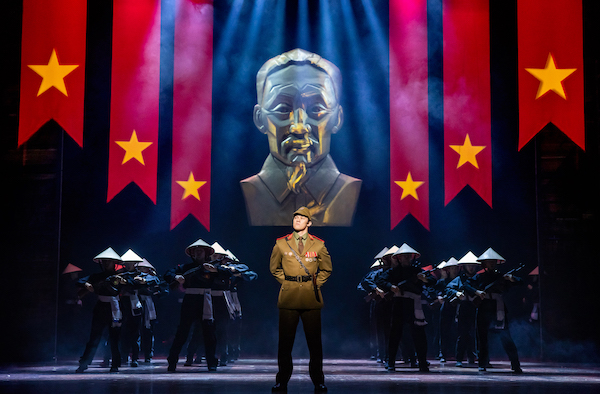
While we don’t necessarily have to have a history lesson, what Miss Saigon lacks is the clear context of its setting. It’s a beautiful, tragic story. It is spectacularly presented. But to get a true grasp of “Saigon” in that era, you’ll have to do your own reading.
Nevertheless, Kim’s heartbreaking story is one that, if you think about it, remains relevant to this day. There are still many Saigons in the world, and many Kims may still be out there. Along with this sobering reminder of the realities of war still out there, this 2024 Manila production “Miss Saigon” is also a testament, genuinely, to the timelessness of its music, and the heritage of Filipinos as world-class performers.
“Miss Saigon” is presented by GMG Productions and will run until May 12 at The Theatre at Solaire. Starring Abigail Adriano as Kim, Seann Miley Moore as the Engineer, Nigel Huckle as Chris, Laurence Mossman as Thuy, and Kiara Dario as Gigi.















































